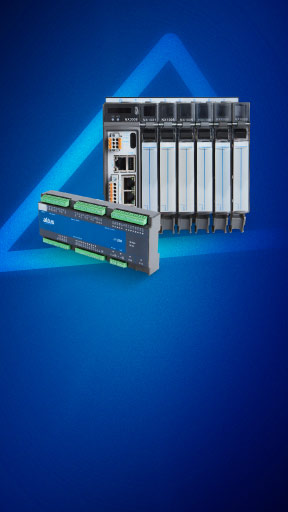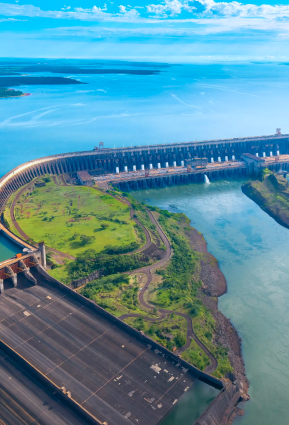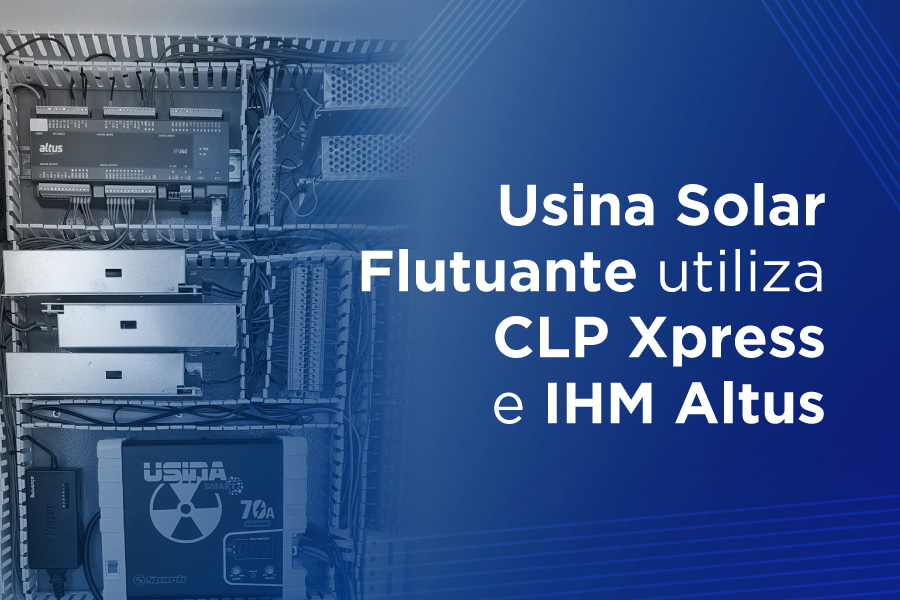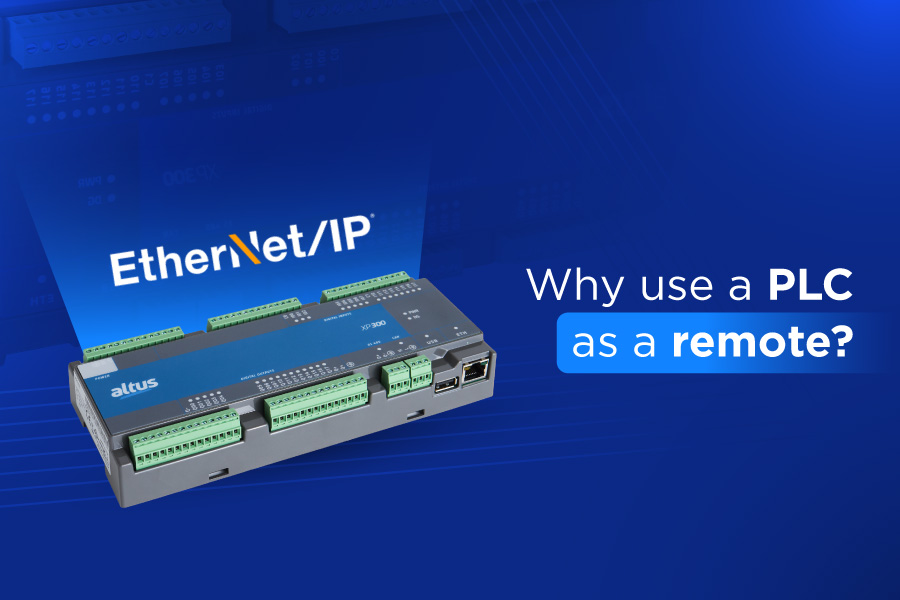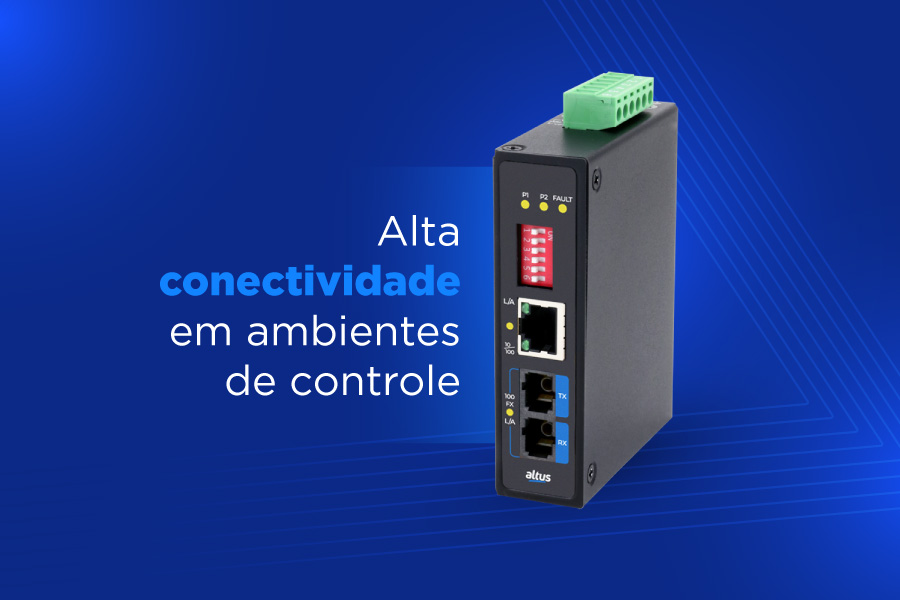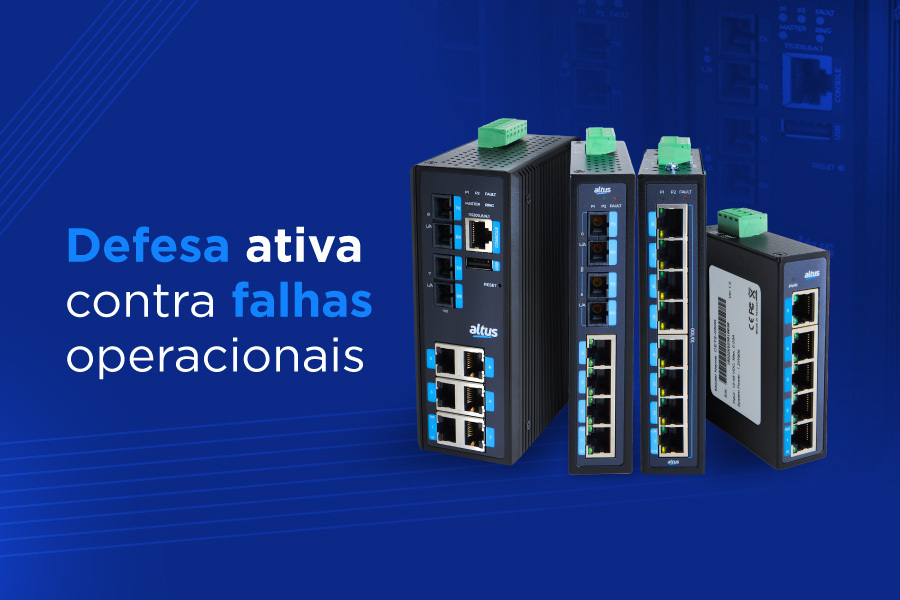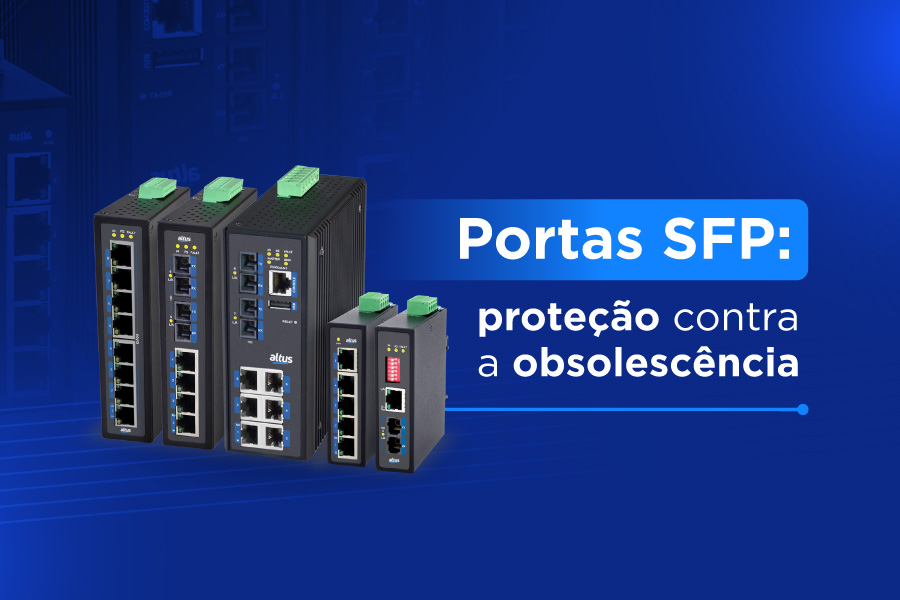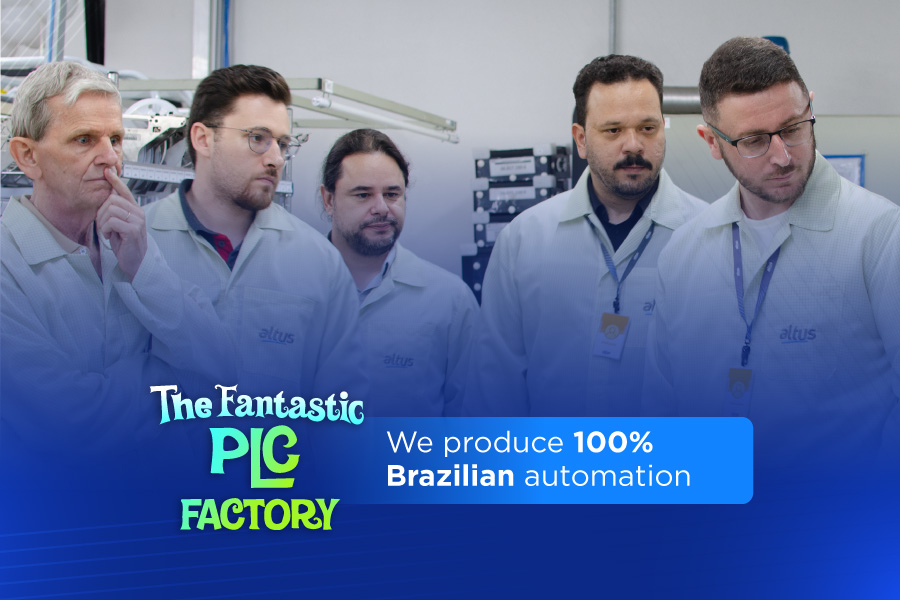Altus has been participating in electricity sector projects for over 40 years, contributing to the development of control and supervision technologies that are capable of providing solutions for the segment's demands. With an extensive history of applications created to guarantee the availability of the national energy generation park, the high technology embedded in the company's solutions contributes to the production of around 15% of the energy generated in the country.
Today, in addition to ensuring the stability and operation of traditional power generation projects, such as UHEs, UTEs and PCHs, Altus product technology is also present in new projects for the generation of sustainable and renewable energy.
Among these new projects is the development of a solution for implementing floating solar power plants in river environments, such as lakes, reservoirs and dams. With sustainable installation and high return on investment, this type of project can be an excellent alternative energy generation option for the national industry.
Follow us through the next paragraphs and find out what a floating solar plant is, how it works and the role of Altus technology. We will also talk about the national energy market and other tecnologias 4.0 para o setor. Boa leitura!
What is a floating solar power plant?
In recent years, solar energy has been a very important alternative in the distributed generation of electrical energy, and many technologies have been developed from it, occupying space in centralized generation and encompassing large power plants. Among these technologies are floating solar plants, sustainable installations of baixíssimo impacto ambiental e com alto retorno de investimento.
The operation of a unit like this is similar to that of a solar power plant with panels installed on the roof or ground of the property. However, in floating plants, the panels hover over the water. To do this, they are attached to floats, which ensure that the panels will not sink and will be at the right angle to capture sunlight.
These floats can be made of High Density Polyethylene (HDPE), with the PV structures made of pultruded plastic reinforced with fiberglass or aluminum. The structures also have a metal ring to ensure mechanical, electrical and anchoring integrity.
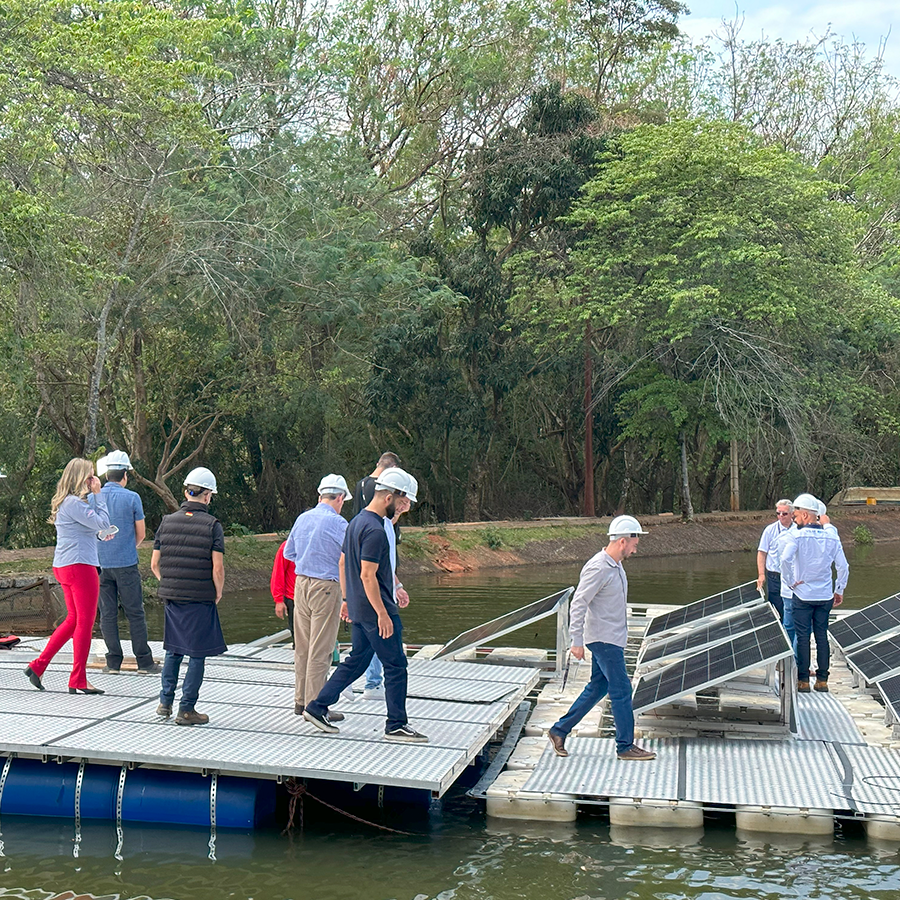
Ambiente de exposição da solução no evento
That's where Altus technology comes in! The CLP XP340, a model from the Nexto Xpress family of compact and IoT-Ready programmable controllers, was the equipment chosen to act as the central piece in the plant's control system. It is responsible for controlling the system's thrusters and anchor, allowing the set to adjust its route to be in the most energy-efficient position for the moment.
Another Altus product applied in the project was the X2-BASE high-performance HMI, equipment used for displacement control and system supervision.
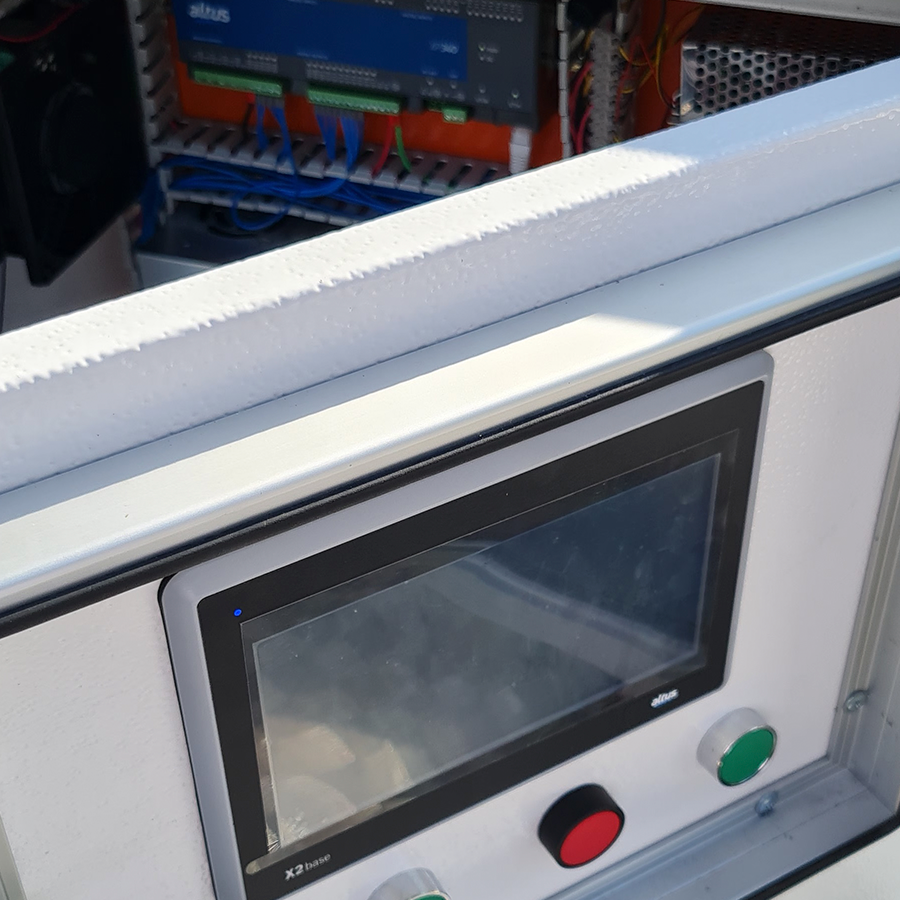
Painel de controle da embarcação
Why invest in a floating solar plant
The Brazilian ecosystem conditions are extremely favorable in relation to the environment required for floating solar plants. According to the National Water Agency (ANA), the country has more than 420,000 registered lakes in the country. In addition to many natural bodies of water, the country also has several artificial reservoirs due to the areas occupied by hydroelectric dams.
Among the main benefits of installing a floating solar plant in a hydroelectric reservoir we can mention the release of productive land, the reduction of water evaporation by up to 70% and the tracking capacity, in addition to the ease of cleaning the structure and energy efficiency.
Lower temperatures beneath the water surface also boost solar photovoltaic power generation. In drought-prone areas or hydroelectric dams, these benefits prove extremely useful.
Renewable sources are the highlight of the Brazilian electricity matrix in 2023
The Brazilian electricity matrix is formed by the set of sources used to generate electricity in the national territory. According to data published by ANEEL's Generation Information System (SIGA), Brazil has an installed capacity of 193.9 GW, with approximately 83% of this total composed of renewable energy sources. These figures make the Brazilian energy matrix considered one of the most renewable in the world.
Hydroelectric projects, such as hydroelectric plants and small hydroelectric plants, are responsible for generating most of the country's energy (57%). However, wind and solar energy have also been gaining prominence in recent years, helping to ensure that the Brazilian electricity matrix continues to grow in a sustainable manner.
According to data published by ANEEL, Brazil concluded the first half of 2023 with an increase of 5.1 gigawatts in its installed electricity generation capacity. Renewable sources accounted for 3.3 gigawatts of this total, with 49.15% coming from wind farms and 37.19% from solar photovoltaic plants.
According to the agency, of the 160 plants that entered into commercial operation in the period, 67 are wind-powered, totaling 2.3 GW (44.53% of the total 5.1 GW); 59 are solar photovoltaic, with 2.2 GW (42.76%); 23 are thermoelectric, with 521.4 MW (10.13%); eight are small hydroelectric plants (PCHs), with 121.5 MW (2.36%); and three are hydroelectric generating plants, with 11.4 MW (0.22%).
Para proporcionar mais conectividade, segurança e estabilidade à comunicação aos processos de geração de energia elétrica, novos produtos e tecnologias têm sido desenvolvidas. Nos próximos parágrafos vamos falar sobre algumas dessas tecnologias e os produtos que fazem uso delas.
A tecnologia LoRa e seu uso para melhorar a eficiência energética
LoRa, do inglês Long Range, é uma tecnologia de radiocomunicação de longo alcance and baixo consumo de energia amplamente utilizada em várias aplicações do universo IoT. O protocolo opera através do envio pequenos pacotes de dados, o que agiliza a comunicação. Desenvolvido com base em um padrão aberto, o protocolo é capaz de conectar diferentes dispositivos em uma rede de baixa potência, permitindo que eles operem com eficiência energética e alta capacidade de transmissão de dados.
O uso de tecnologias de comunicação de dados sem fio em sistemas de automação, coleta de dados e telemetria é uma tendência em crescente expansão em especial como uma força motriz das revoluções propiciadas pela Indústria 4.0. As vantagens do uso de tecnologia sem fio são inúmeras e a sua disseminação ainda está abaixo do seu real potencial, principalmente por dúvidas quanto à segurança, estabilidade e confiabilidade neste tipo de comunicação.
As soluções de comunicação sem fio reduzem os custos com cabeamento, instalação e comissionamento, chegando a impactar também a etapa de manutenção, permitindo o acesso a dados que não poderiam ser acessados por tecnologias com fio. O acesso e análise destes dados podem evitar paradas desnecessárias em processos e sistemas, o que aumenta a sua disponibilidade, produtividade and safety na infraestrutura disponibilizada.
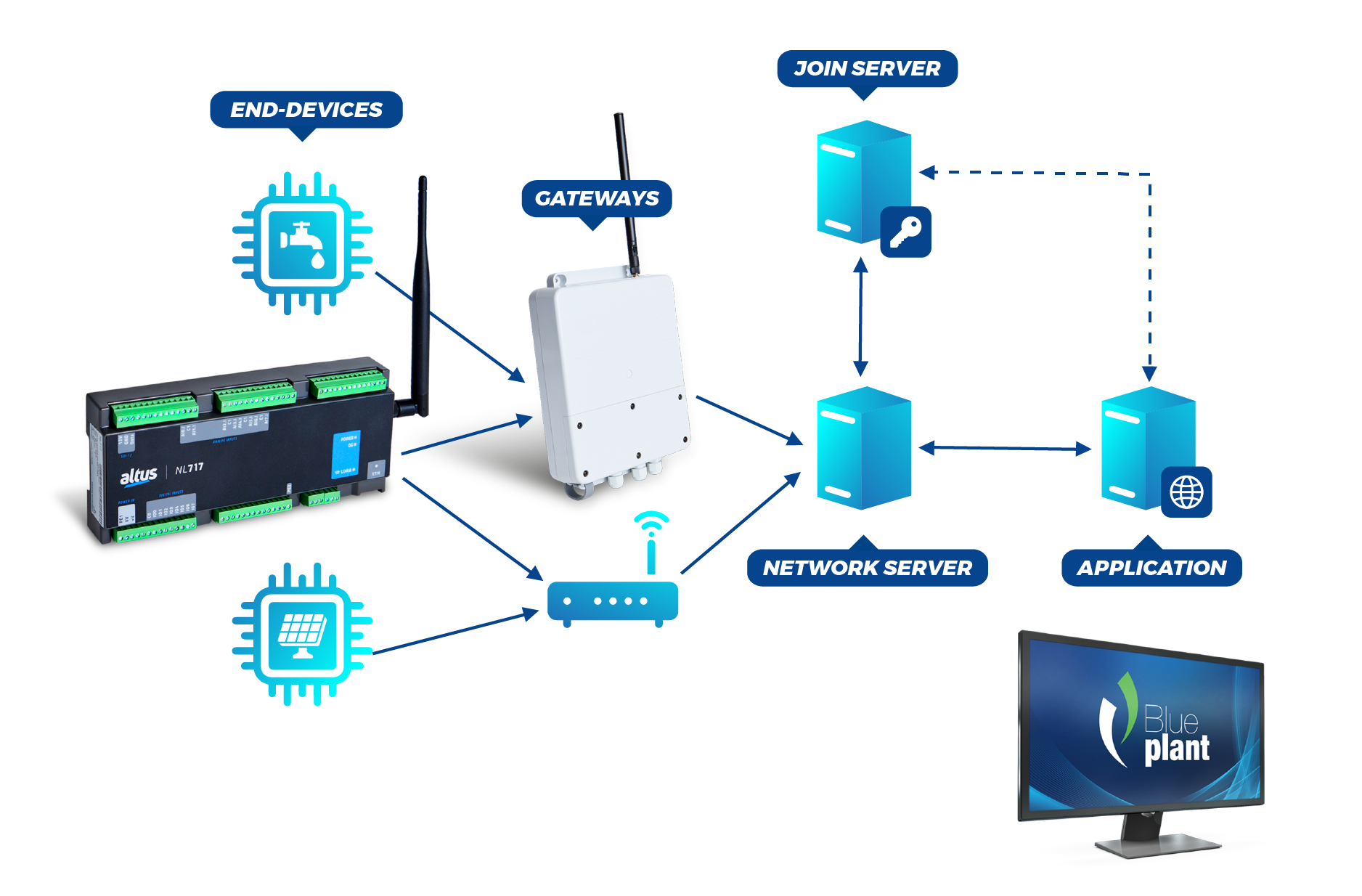
Você pode utilizar a tecnologia LoRa para melhorar a eficiência energética de várias maneiras. Primeiramente, o LoRa permite a implantação de sensores de monitoramento de energia em diferentes equipamentos e processos industriais. Esses sensores podem coletar dados em tempo real sobre o consumo de energia, possibilitando uma visão detalhada e precisa do perfil de consumo da indústria. Com base nesses dados, a empresa pode identificar áreas de desperdício ou ineficiência energética e implementar medidas corretivas.
Além disso, o LoRa possibilita a comunicação eficiente e confiável entre os dispositivos IoT na indústria, como sensores, atuadores e controladores. Isso permite a implementação de sistemas de controle inteligentes, nos quais os dispositivos podem trocar informações sobre o estado de operação, ajustar parâmetros de acordo com a demanda e otimizar o consumo de energia em tempo real.
O uso do protocolo LoRa também oferece a vantagem de uma infraestrutura de comunicação de baixo custo e baixo consumo de energia. A tecnologia de longo alcance permite cobrir grandes áreas industriais com poucas antenas, reduzindo a necessidade de infraestrutura adicional. Além disso, o baixo consumo de energia dos dispositivos LoRa prolonga a vida útil das baterias, eliminando a necessidade frequente de substituição.
Introducing Altus new LoRa datalogger and gateway
Designed to meet the diverse monitoring and telemetria das mais diferentes áreas da indústria, o Nexto Logger NL717 and Gateway Lora GW700 chegam para atuar na coleta e transmissão de dados em instalações de geração de energia, estações hidrológicas e meteorológicas, entre outros sistemas que exigem coleta de dados de forma remota. Os novos produtos da Altus utilizam o protocolo de comunicação LoRa, tecnologia de radiocomunicação de longo alcance e baixo consumo de energia amplamente utilizada em várias aplicações do universo IoT.
The Nexto Logger NL717 é um dispositivo de design compacto com fast processing capabilities,built-in digital and analog inputs, Ethernet interfaces, SDI-12 communication and integrated long-range LoRa radio. It’s designed for applications that demand remote, highly accurate data collection—crucial for monitoring hydrological parameters, managing solar energy systems, controlling irrigation in agriculture, and more. This level of precision is key for both public and private urban infrastructures, where sensor data and real-time measurements are essential.
Além disso, o Nexto Logger pode ser aplicado como um complemento para outras aplicações que utilizam os Nexto Series programmable controllersextending the functionality and scalability of these systems. This compatibility makes it an excellent choice for OEM machine builders and integradores de sistemas nestas áreas de aplicações onde é necessária escalabilidade de aplicação.
Engineered to perform in tough environments and withstand the elements, the LoRa Gateway GW700 boasts an IP67 protection rating, making it a perfect fit for urban, rural, and industrial settings alike. The gateway also features a power system with multiple safety protections, all compliant with international standards.
With thousands of devices used in today’s industry to monitor variables like temperature, humidity, and water levels, the GW700 is designed to work seamlessly with LoRa devices from Altus, such as the NL717 datalogger, as well as any LoRa-compatible device on the market. It can also be integrated into networks with other gateways without needing additional conversion equipment or adaptations.
This level of flexibility makes the GW700 an ideal solution not just for large network operators but also for individual users managing their own networks and devices. In Brazil, there are already public networks where anyone can extend coverage using the GW700 without compromising data security. Thanks to LoRa’s multi-layer encryption built directly into both the network and the application, users can rest assured that their data is fully protected.
Robustez e desempenho para o mercado de energia com a UTR Hadron Xtorm
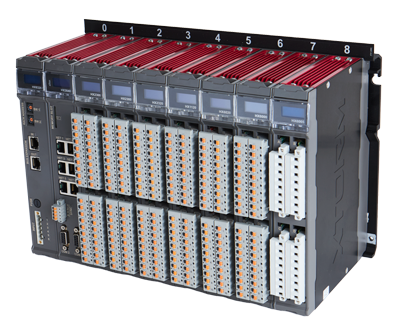 Outro produto de destaque que apresentamos em ambas as feiras foram as unidades terminais remotas da Hadron Xtorm Series, produtos robustos e de alto desempenho para sistema de geração, transmissão e distribuição de energia elétrica. Desenvolvidos com base nas normas internacionais IEC 61850 and IEC 61131-3, os produtos Hadron Xtorm contam com funcionalidades de destaque, como redundância de fontes de alimentação, redundância de CPUs em um bastidor, protocolos DNP3 and IEC 61850 (MMS e GOOSE) e atendimento ao submódulo 2.7 da ONS. Por ser uma solução de arquitetura modular, a RTU fornece uma grande variedade de módulos de entradas e saídas que, combinados com sua poderosa CPU 32 bits e um barramento baseado em Ethernet determinística de alta velocidade, atendem aos requisitos de diversas aplicações.
Outro produto de destaque que apresentamos em ambas as feiras foram as unidades terminais remotas da Hadron Xtorm Series, produtos robustos e de alto desempenho para sistema de geração, transmissão e distribuição de energia elétrica. Desenvolvidos com base nas normas internacionais IEC 61850 and IEC 61131-3, os produtos Hadron Xtorm contam com funcionalidades de destaque, como redundância de fontes de alimentação, redundância de CPUs em um bastidor, protocolos DNP3 and IEC 61850 (MMS e GOOSE) e atendimento ao submódulo 2.7 da ONS. Por ser uma solução de arquitetura modular, a RTU fornece uma grande variedade de módulos de entradas e saídas que, combinados com sua poderosa CPU 32 bits e um barramento baseado em Ethernet determinística de alta velocidade, atendem aos requisitos de diversas aplicações.
Enquanto fornecedora global para o segmento, a Altus possui grande experiência no desenvolvimento de soluções para o setor de energia nacional. O alto nível tecnológico de nossos produtos e a capacidade de nosso corpo técnico permite à empresa criar soluções inovadoras voltadas para a produtividade e disponibilidade da operação e manutenção de sistemas. Estes fatos credenciam a companhia a aplicar projetos de diferentes magnitudes nas áreas de Geração, Transmissão e Distribuição de energia, além do segmento de energias renováveis.
